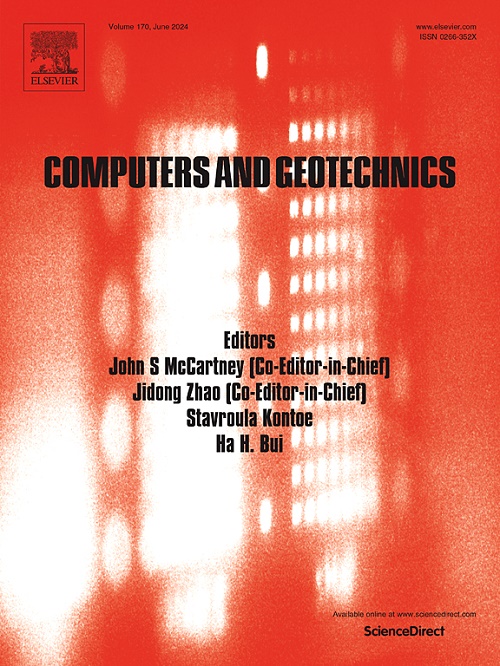A sparse-memory-encoding GPU-MPM framework for large-scale simulations of granular flows
IF 5.3
1区 工程技术
Q1 COMPUTER SCIENCE, INTERDISCIPLINARY APPLICATIONS
引用次数: 0
Abstract
The Material Point Method (MPM) is increasingly recognized as an effective tool for simulating complex granular flows. While GPU computing has been widely used in MPM applications for large-scale problems, its heavy reliance on contiguous memory distribution can significantly hinder efficiency and limit simulation capabilities due to memory capacity constraints. This study presents a sparse-memory-encoding framework that incorporates advanced algorithms to address these limitations in large-scale simulations. We introduce a novel algorithm for atomic-free dual mapping between material points and nodes, in conjunction with warp-wise particle-to-grid mappings organized within a block-cell-material point hierarchy. Moreover, the framework features an efficient memory shift algorithm that optimizes memory usage for material properties. This optimization enables the seamless integration of commonly used material constitutive models, including elastic, elastoplastic, and hyper-plastic models, as well as various iteration schemes such as “update stress first”, “update stress last”, and “modified update stress last” within a cohesive framework. Furthermore, the framework accommodates incorporating diverse boundary conditions, such as Dirichlet, Neumann, and arbitrary-shaped rigid body contact, thus broadening its applicability to real-world engineering challenges, including landslides. The framework can effectively and efficiently handle large-scale, high-fidelity simulations of granular flows.
求助全文
约1分钟内获得全文
求助全文
来源期刊

Computers and Geotechnics
地学-地球科学综合
CiteScore
9.10
自引率
15.10%
发文量
438
审稿时长
45 days
期刊介绍:
The use of computers is firmly established in geotechnical engineering and continues to grow rapidly in both engineering practice and academe. The development of advanced numerical techniques and constitutive modeling, in conjunction with rapid developments in computer hardware, enables problems to be tackled that were unthinkable even a few years ago. Computers and Geotechnics provides an up-to-date reference for engineers and researchers engaged in computer aided analysis and research in geotechnical engineering. The journal is intended for an expeditious dissemination of advanced computer applications across a broad range of geotechnical topics. Contributions on advances in numerical algorithms, computer implementation of new constitutive models and probabilistic methods are especially encouraged.
 求助内容:
求助内容: 应助结果提醒方式:
应助结果提醒方式:


